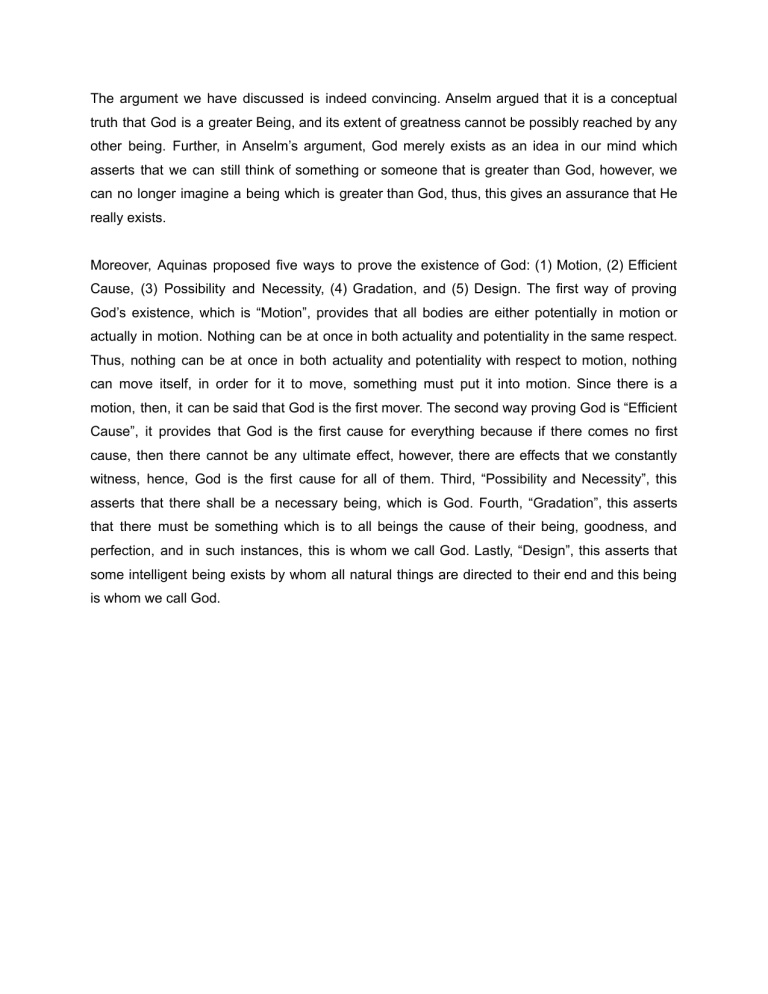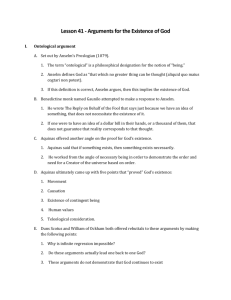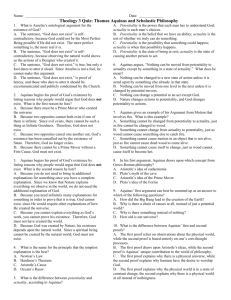
The argument we have discussed is indeed convincing. Anselm argued that it is a conceptual truth that God is a greater Being, and its extent of greatness cannot be possibly reached by any other being. Further, in Anselm’s argument, God merely exists as an idea in our mind which asserts that we can still think of something or someone that is greater than God, however, we can no longer imagine a being which is greater than God, thus, this gives an assurance that He really exists. Moreover, Aquinas proposed five ways to prove the existence of God: (1) Motion, (2) Efficient Cause, (3) Possibility and Necessity, (4) Gradation, and (5) Design. The first way of proving God’s existence, which is “Motion”, provides that all bodies are either potentially in motion or actually in motion. Nothing can be at once in both actuality and potentiality in the same respect. Thus, nothing can be at once in both actuality and potentiality with respect to motion, nothing can move itself, in order for it to move, something must put it into motion. Since there is a motion, then, it can be said that God is the first mover. The second way proving God is “Efficient Cause”, it provides that God is the first cause for everything because if there comes no first cause, then there cannot be any ultimate effect, however, there are effects that we constantly witness, hence, God is the first cause for all of them. Third, “Possibility and Necessity”, this asserts that there shall be a necessary being, which is God. Fourth, “Gradation”, this asserts that there must be something which is to all beings the cause of their being, goodness, and perfection, and in such instances, this is whom we call God. Lastly, “Design”, this asserts that some intelligent being exists by whom all natural things are directed to their end and this being is whom we call God.




